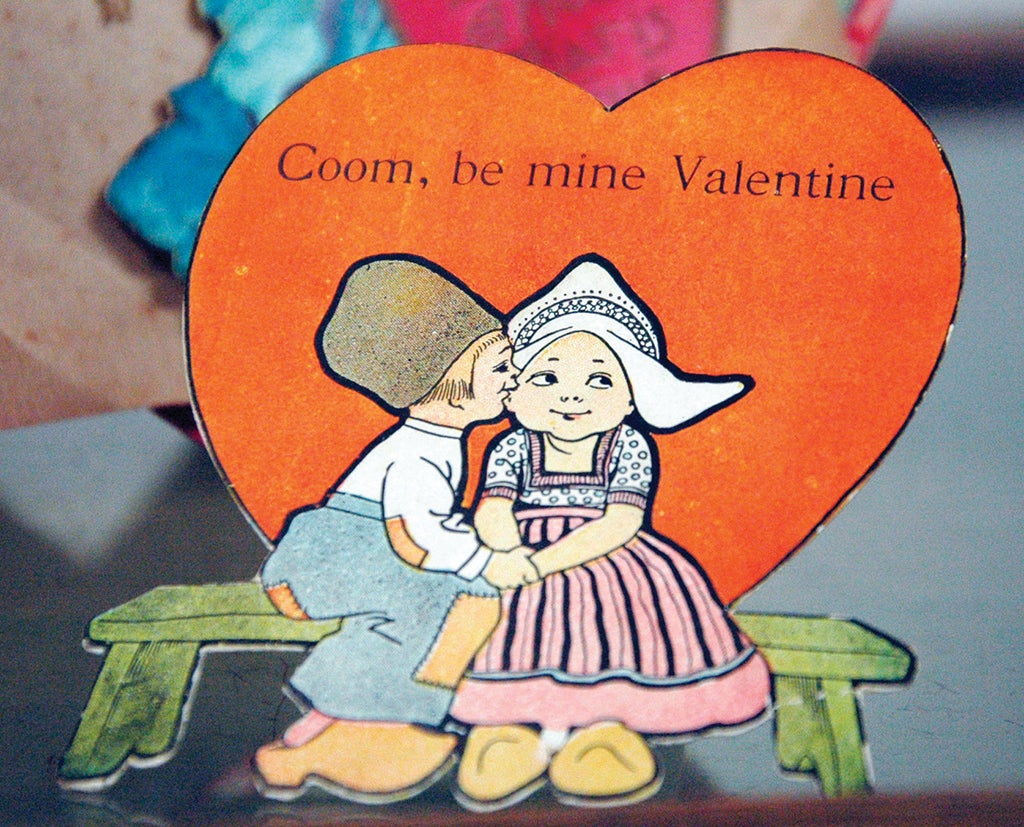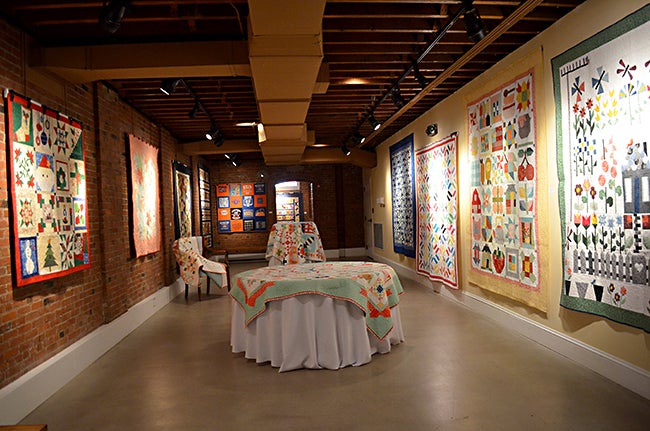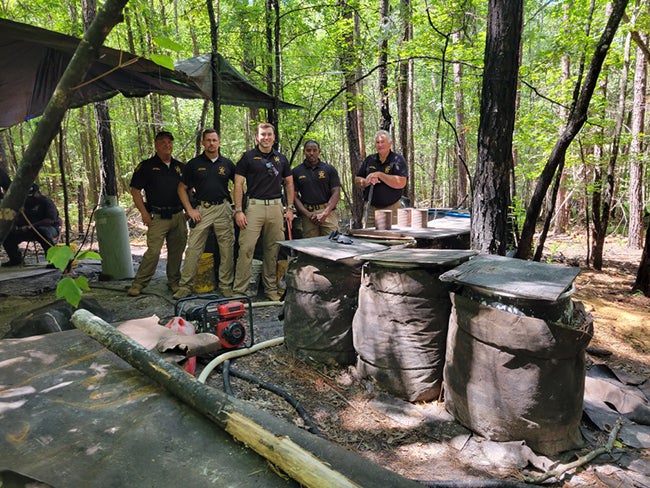Published 3:00 am Saturday, February 13, 2016

Pioneer Museum of Alabama volunteer, Charlene McMahon handles heirloom Valentine’s with kid gloves. McMahon spent time Friday sharing stories about Valentine stories from long ago with visitors to the museum. Pioneer Museum has a large collection of heirloom valentine’s dating back to the early 1900’s. Some are whimsical while others are heart-felt and ornate.
Thoughts of Valentine’s Day brought, first, a sigh, then a smile and laughter as Charlene McMahon remembered.
There’s that soft, tender side of Valentine’s Day that comes with memories of puppy love, first love and lasting love. Then, there are other memories of silly rhymes, conversation candy hearts, punch-out valentines and Kool-Aid and crumbly, sticky cupcakes.
“Roses are red; violets are blue, sugar is sweet and so are you” brought smiles to little girls’ faces while turns of phrases brought frowns to the little fellows. “Roses are red; violets are blue. Skunks stink and so do you.”
Valentine’s Day was a different kind of time back when little Charlene was in “grammar school.”
“It would take all week long to get ready for our Valentine’s Day party,” McMahon said. “Back then, we made most of our Valentines out of colored construction paper and doilies. To make hearts – and you had to have hearts – we would fold a sheet of paper in half and cut it like a half heart so when you unfolded it, you would have a symmetrical heart. We would have to fold and cut several times before we got a pattern for a perfect heart.”
The hearts would be cut and “pasted” on brown paper sacks for the collection of Valentines when they were handed out.
“We used paste that came in little plastic jars with a stick on the lid,” McMahon said. “We would swipe paste on the back on the heart and ‘glue’ it on the bag or whatever we were decorating with hearts. We also had paper doilies that were very ornate and we would glue them on for decorations.”
McMahon said some children gave store-bought Valentines while others made theirs.
“Back then, you could buy books of Valentines that you could punch out like paper dolls,” she said. “They had all kinds of sayings on them, ‘Be Mine’ and “Hug Me.’ Things like that. And usually, the pictures were of little children playing –jumping rope and see-sawing –and with animals – puppies, turtles and birds. Sometimes there would be a cupid with a bow and arrow but not often. Some Valentines had tabs that you could fold back so the Valentine would stand up.”
McMahon said some children made their Valentines on a sheet of notebook paper with pictures drawn at the top and words written at the bottom.”
Later, Valentines came on the market that were printed on heavy paper with a slit in it.
“A heart-shaped red sucker would be stuck in the slit. Getting a Valentine like that was a real treat and was usually from someone very special,” McMahon said. “Some Valentines came in a box – 20 to the box with 1 teacher Valentine included. They usually had corny things written on them, even for the teacher.”
The teacher had usually covered a box in red tissue paper and the students dropped the Valentines for their classmates in the box to be given out at the Valentine’s Day party.
“There were all kinds of Valentines in that box – store bought, hand-made – and each one had been carefully selected to make sure it said just the right thing for each person,” McMahon said.
With the classroom all decorated in red and white and with Valentines all around, it was party time.
“The room mothers came and brought refreshments for the party,” McMahon said. “We always had Kool-Aid, red Kool-Aid — and cookies and, most of the time, cupcakes. And, we always had candy hearts or conversation hearts. We would hand the hearts out to each other without a thought of washing our hands. Back then, we didn’t have germs. We didn’t wash our hands when we went to eat to dinner, either. Hand washing was not a big important thing for us.”
McMahon said the children would sit quietly at their desks or tables, depending on their ages, and wait patiently to be served. When everyone had eaten and the desks had been cleaned off, the Valentines would be handed out.
“Sometimes we signed a Valentine with ‘Guess Who?’ with lots of question marks and exclamation marks,” she said. “If you got a Valentine with ‘Guess Who?’ you would try to figure out who sent it. You always decided it was just who you wanted it to be.”
McMahon said Valentines have changed drastically over the years and so have the messages on conversation candies.
Valentines have gone from the elaborate and ornate to kid friendly to movie themed – Star Wars and Super Heroes.
The messages on the conversation candy has transitioned from “Miss You” and “All Mine” to “UR Hot” and “Text Me.”
But not matter whether Valentines are made from notebook paper and crayons or from papyrus and satin ribbons, they all said “Love You” — just in different kinds of ways.







